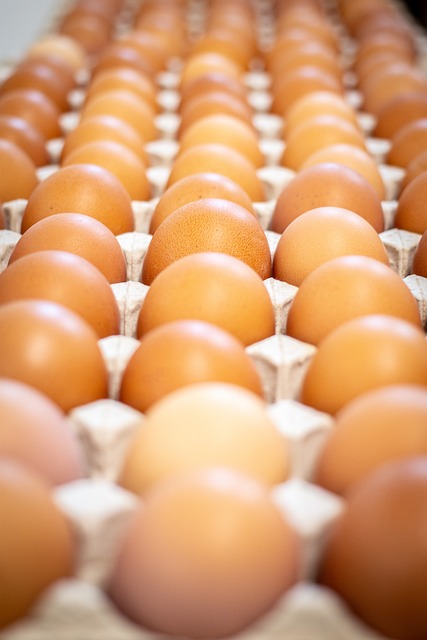Fertility treatment with donor eggs offers couples facing conception challenges a powerful tool using healthier, younger genetic material through IVF. This option significantly enhances successful pregnancy chances and reduces miscarriage risk, providing hope to women with diminished ovarian reserve or genetic disorders. The process involves key steps from consultation to embryo transfer, aiming for realistic goals and enhanced outcomes. Success stories highlight resilience, love, and new beginnings, fostering deep connections between donor and recipient families.
“Embark on a journey of hope and love as we explore the transformative power of egg donation in fertility treatment. This comprehensive guide delves into the world of donor eggs, offering insights into their significance in achieving parenthood through IVF. From understanding the process to real-life success stories, we navigate the path from donation to family creation. Learn about the steps involved in IVF and discover how these innovative methods bring new life into the world. Join us as we celebrate the strength and beauty of choosing family.”
Understanding the Power of Donor Eggs in Fertility Treatment
The power of donor eggs in fertility treatment cannot be understated, especially for couples facing challenges conceiving. In many cases, using donor eggs significantly improves the chances of successful pregnancy through in vitro fertilization (IVF). This is because donor eggs provide younger, healthier genetic material, which can enhance fertility and potentially reduce the risk of miscarriage.
The process offers a ray of hope for women with diminished ovarian reserve or those at risk of transmitting genetic disorders. By utilizing donor eggs from healthy individuals, couples are able to create embryos with strong genetic potential, increasing their chances of achieving a healthy pregnancy and welcoming a beloved child into their lives.
The Journey: From Donation to Parenthood
The journey to motherhood for many couples involves a delicate balance of hope, science, and love. For those who turn to fertility treatments with donor eggs, this path can be particularly transformative. It begins with a generous act—a woman deciding to donate her eggs, offering a chance at parenthood to another couple or individual. This donation is then carefully evaluated and matched with a recipient who, with the help of IVF (in-vitro fertilization), has the potential to create a family.
Through this process, a profound connection forms between donor and recipient, built on shared vulnerability and desire for a future together. With each successful pregnancy, the cycle continues, fostering a community where modern science intertwines with human compassion. The journey from donation to parenting is not just about medical procedures but also about embracing new beginnings and the unbreakable bonds that emerge along the way.
Navigating IVF: A Step-by-Step Guide for Successful Outcomes
Embarking on the journey of IVF (In Vitro Fertilization) can be both exciting and daunting. Here’s a simplified guide for navigating this fertility treatment with donor eggs:
1. Consultation and Planning: Begin by consulting with a specialized clinic to understand your unique situation and expectations. Discuss the process, costs, and success rates associated with IVF using donor eggs. This step is crucial for setting realistic goals and managing expectations.
2. Medical Evaluation: Both the recipient (the person receiving the donated eggs) and her partner (if applicable) will undergo thorough medical evaluations. This includes blood tests, ultrasounds, and other procedures to assess fertility, identify any underlying issues, and determine the optimal treatment plan.
3. Egg Donation Coordination: Once ready, coordinate with a donor through the clinic or an egg donation agency. Ensure proper matching based on criteria like age, health, and compatibility. The selected donor will then undergo stimulation and retrieval of her eggs, which are subsequently frozen for later use.
4. Stimulation and Retrieval: The recipient will start hormone therapy to prepare her body for embryo transfer. This involves stimulating the ovaries to produce one or more eggs, which are then carefully retrieved in an outpatient procedure.
5. Embryo Transfer: Fertilized eggs (embryos) created from the donor’s eggs and the recipient’s sperm are cultivated in a lab until they reach a suitable stage for transfer into the uterus. This step requires careful monitoring to maximize chances of implantation and successful pregnancy.
Embracing New Life: Stories of Hope and Love Created Through Donation
Many couples embark on a journey of hope and love when facing fertility challenges, often turning to innovative solutions like fertility treatment with donor eggs. This path opens doors to new possibilities, allowing those who dream of motherhood to create families. Stories abound of couples who have successfully welcomed children through egg donation and IVF, each tale a testament to the power of modern science intertwining with selfless generosity.
These journeys are not just about medical procedures; they are stories of resilience, patience, and unwavering love. Every successful pregnancy is a celebration of life, a reminder that even in the face of adversity, new beginnings are possible. The act of donating eggs embodies altruism, as healthy individuals contribute to another’s chance at parenthood, fostering a profound connection between donor and recipient families.
The journey to motherhood, whether through egg donation or IVF, is a testament to human resilience and love. By understanding the power of donor eggs in fertility treatment and embracing the success stories that follow, we celebrate the hope and new life created for countless families. This comprehensive guide navigates the process, from initial steps to happy endings, underscoring the importance of informed decisions and professional support throughout. For those navigating these treatments, remember that with proper care and determination, creating a family can be an achievable dream.
